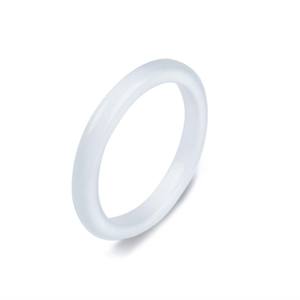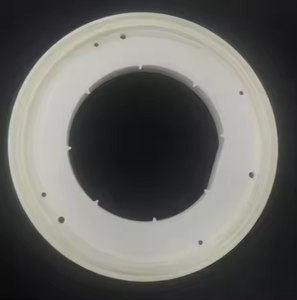1. Product Principles and Microstructural Characteristics of Alumina Ceramics
1.1 Make-up, Pureness Qualities, and Crystallographic Quality
(Alumina Ceramic Wear Liners)
Alumina (Al Two O FIVE), or light weight aluminum oxide, is among one of the most extensively used technical porcelains in industrial design because of its outstanding equilibrium of mechanical strength, chemical security, and cost-effectiveness.
When engineered into wear linings, alumina ceramics are usually produced with purity levels varying from 85% to 99.9%, with higher purity corresponding to enhanced solidity, use resistance, and thermal efficiency.
The leading crystalline stage is alpha-alumina, which adopts a hexagonal close-packed (HCP) framework identified by solid ionic and covalent bonding, contributing to its high melting factor (~ 2072 ° C )and reduced thermal conductivity.
Microstructurally, alumina porcelains include penalty, equiaxed grains whose dimension and distribution are regulated throughout sintering to optimize mechanical homes.
Grain dimensions normally vary from submicron to numerous micrometers, with finer grains usually enhancing fracture strength and resistance to split propagation under unpleasant loading.
Minor ingredients such as magnesium oxide (MgO) are commonly introduced in trace total up to inhibit abnormal grain development during high-temperature sintering, ensuring uniform microstructure and dimensional stability.
The resulting material displays a Vickers firmness of 1500– 2000 HV, substantially surpassing that of set steel (commonly 600– 800 HV), making it remarkably resistant to surface deterioration in high-wear environments.
1.2 Mechanical and Thermal Efficiency in Industrial Issues
Alumina ceramic wear liners are picked mostly for their superior resistance to abrasive, erosive, and moving wear devices widespread wholesale material managing systems.
They have high compressive stamina (as much as 3000 MPa), good flexural toughness (300– 500 MPa), and excellent rigidity (Young’s modulus of ~ 380 Grade point average), enabling them to stand up to intense mechanical loading without plastic deformation.
Although naturally weak contrasted to metals, their reduced coefficient of rubbing and high surface area hardness reduce fragment attachment and decrease wear rates by orders of magnitude about steel or polymer-based choices.
Thermally, alumina preserves structural stability approximately 1600 ° C in oxidizing atmospheres, enabling use in high-temperature handling settings such as kiln feed systems, central heating boiler ducting, and pyroprocessing tools.
( Alumina Ceramic Wear Liners)
Its reduced thermal development coefficient (~ 8 × 10 ⁻⁶/ K) adds to dimensional stability during thermal cycling, decreasing the risk of splitting as a result of thermal shock when appropriately set up.
Furthermore, alumina is electrically protecting and chemically inert to many acids, antacid, and solvents, making it appropriate for corrosive settings where metallic liners would certainly break down rapidly.
These combined homes make alumina porcelains perfect for protecting crucial framework in mining, power generation, cement manufacturing, and chemical processing sectors.
2. Production Processes and Layout Integration Methods
2.1 Forming, Sintering, and Quality Assurance Protocols
The manufacturing of alumina ceramic wear liners involves a series of precision production steps designed to attain high density, very little porosity, and consistent mechanical efficiency.
Raw alumina powders are refined via milling, granulation, and forming methods such as completely dry pushing, isostatic pushing, or extrusion, depending on the desired geometry– tiles, plates, pipes, or custom-shaped sectors.
Environment-friendly bodies are then sintered at temperature levels in between 1500 ° C and 1700 ° C in air, advertising densification via solid-state diffusion and attaining loved one thickness exceeding 95%, often coming close to 99% of theoretical thickness.
Full densification is crucial, as residual porosity works as anxiety concentrators and accelerates wear and fracture under service conditions.
Post-sintering operations may include ruby grinding or splashing to accomplish tight dimensional tolerances and smooth surface area finishes that reduce friction and fragment trapping.
Each set undergoes rigorous quality assurance, consisting of X-ray diffraction (XRD) for stage analysis, scanning electron microscopy (SEM) for microstructural evaluation, and solidity and bend screening to verify conformity with international criteria such as ISO 6474 or ASTM B407.
2.2 Mounting Strategies and System Compatibility Considerations
Efficient assimilation of alumina wear liners into industrial equipment calls for cautious attention to mechanical add-on and thermal development compatibility.
Typical installation techniques consist of adhesive bonding making use of high-strength ceramic epoxies, mechanical fastening with studs or supports, and embedding within castable refractory matrices.
Adhesive bonding is widely made use of for flat or carefully curved surfaces, supplying consistent anxiety distribution and vibration damping, while stud-mounted systems permit simple replacement and are preferred in high-impact areas.
To fit differential thermal expansion in between alumina and metal substrates (e.g., carbon steel), engineered voids, adaptable adhesives, or compliant underlayers are included to stop delamination or splitting during thermal transients.
Designers should additionally take into consideration edge defense, as ceramic tiles are prone to breaking at exposed corners; solutions include diagonal sides, steel shadows, or overlapping floor tile setups.
Appropriate installation guarantees lengthy life span and maximizes the protective function of the lining system.
3. Wear Devices and Efficiency Analysis in Solution Environments
3.1 Resistance to Abrasive, Erosive, and Influence Loading
Alumina ceramic wear linings excel in atmospheres dominated by three main wear systems: two-body abrasion, three-body abrasion, and particle disintegration.
In two-body abrasion, hard bits or surfaces directly gouge the liner surface area, a common occurrence in chutes, hoppers, and conveyor changes.
Three-body abrasion includes loosened bits entraped in between the lining and relocating product, resulting in rolling and scraping activity that gradually removes product.
Abrasive wear occurs when high-velocity fragments impinge on the surface, especially in pneumatically-driven conveying lines and cyclone separators.
Due to its high solidity and low fracture toughness, alumina is most effective in low-impact, high-abrasion scenarios.
It carries out extremely well versus siliceous ores, coal, fly ash, and cement clinker, where wear prices can be reduced by 10– 50 times compared to light steel liners.
However, in applications involving repeated high-energy effect, such as main crusher chambers, hybrid systems integrating alumina tiles with elastomeric supports or metallic guards are commonly used to take in shock and avoid crack.
3.2 Field Testing, Life Process Evaluation, and Failing Setting Analysis
Efficiency evaluation of alumina wear liners involves both research laboratory screening and field surveillance.
Standard examinations such as the ASTM G65 dry sand rubber wheel abrasion examination supply relative wear indices, while tailored slurry erosion gears imitate site-specific conditions.
In commercial settings, put on rate is commonly determined in mm/year or g/kWh, with service life forecasts based upon preliminary thickness and observed deterioration.
Failing modes include surface area polishing, micro-cracking, spalling at edges, and full ceramic tile dislodgement due to glue deterioration or mechanical overload.
Root cause evaluation typically discloses installation mistakes, incorrect quality selection, or unforeseen influence lots as main factors to early failing.
Life cycle expense evaluation constantly demonstrates that in spite of higher first expenses, alumina linings provide premium overall price of possession because of prolonged replacement intervals, lowered downtime, and reduced maintenance labor.
4. Industrial Applications and Future Technological Advancements
4.1 Sector-Specific Applications Throughout Heavy Industries
Alumina ceramic wear liners are released throughout a broad range of industrial fields where product deterioration poses functional and financial difficulties.
In mining and mineral handling, they protect transfer chutes, mill liners, hydrocyclones, and slurry pumps from rough slurries containing quartz, hematite, and other hard minerals.
In nuclear power plant, alumina ceramic tiles line coal pulverizer ducts, central heating boiler ash receptacles, and electrostatic precipitator parts exposed to fly ash disintegration.
Cement makers make use of alumina linings in raw mills, kiln inlet areas, and clinker conveyors to combat the very abrasive nature of cementitious materials.
The steel industry employs them in blast furnace feed systems and ladle shrouds, where resistance to both abrasion and moderate thermal lots is vital.
Also in less standard applications such as waste-to-energy plants and biomass handling systems, alumina ceramics provide long lasting defense against chemically aggressive and coarse products.
4.2 Arising Patterns: Compound Solutions, Smart Liners, and Sustainability
Current study concentrates on boosting the sturdiness and functionality of alumina wear systems through composite design.
Alumina-zirconia (Al ₂ O FIVE-ZrO TWO) compounds leverage change toughening from zirconia to improve fracture resistance, while alumina-titanium carbide (Al ₂ O THREE-TiC) grades supply improved performance in high-temperature moving wear.
An additional advancement includes embedding sensing units within or underneath ceramic liners to keep track of wear development, temperature level, and impact frequency– enabling predictive upkeep and electronic double combination.
From a sustainability viewpoint, the prolonged life span of alumina linings lowers material intake and waste generation, lining up with circular economy principles in commercial operations.
Recycling of spent ceramic liners into refractory aggregates or construction products is likewise being checked out to lessen environmental footprint.
In conclusion, alumina ceramic wear linings represent a keystone of modern industrial wear security modern technology.
Their outstanding solidity, thermal stability, and chemical inertness, incorporated with mature manufacturing and setup methods, make them essential in combating material deterioration throughout hefty markets.
As material scientific research advancements and electronic monitoring comes to be much more integrated, the future generation of clever, resilient alumina-based systems will certainly even more boost operational performance and sustainability in unpleasant settings.
Distributor
Alumina Technology Co., Ltd focus on the research and development, production and sales of aluminum oxide powder, aluminum oxide products, aluminum oxide crucible, etc., serving the electronics, ceramics, chemical and other industries. Since its establishment in 2005, the company has been committed to providing customers with the best products and services. If you are looking for high quality hydrated alumina, please feel free to contact us. (nanotrun@yahoo.com)
Tags: Alumina Ceramic Wear Liners, Alumina Ceramics, alumina
All articles and pictures are from the Internet. If there are any copyright issues, please contact us in time to delete.
Inquiry us

